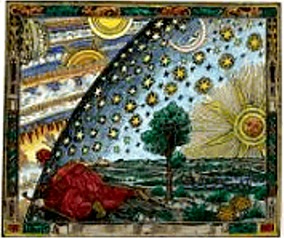

Entheogens (Psychedelics)The Church of Gnostic Luminism will recognize the sacredness and spiritual efficacy of certain herbs and chemicals that can be used to expand human consciousness, enhance intuition, awaken the creative Imagination or Genius, and facilitate the inward focusing of the attention that is the prerequisite for Gnostic Illumination.
From the beginning of recorded history, religious
traditions throughout our planet have known of and used psychedelic plants and
chemicals as material aids to religious practice, or sacraments. Taoists of
ancient China, Hindus of India, and the ancient religions of Ethiopia and Egypt
are known to have honored and used
cannabis
Other ancient cannabis users included the Persian
Zoroastrians (a/k/a the Magi), and the Scythians, whose use of cannabis in
funeral rites is described in the
Histories
The Sanskrit Vedas, among the Earth’s
oldest extant sacred scriptures, speak of
Soma The ancient Greek Initiate movements, including the Dionysian, Elusinian, and Delphic, combined “secret herbs” with their ceremonial wine, perhaps including ergot, the source of lysergic acid from which LSD is made. The ancient Hebrews evidently knew of the spiritual uses of cannabis, and in fact the Greek word cannabis may ultimately derive from the Hebrew kaneh bosm, literally “sweet cane,” given in the Bible as an ingredient of Yahweh’s “holy anointing oil” (Exodus 30:23).
Many indigenous religions of the Americas used
peyote In the early centuries of the common era, the Buddhists of Tibet honored Cannabis and used it as an aid to meditation and illumination, as did the Sufi and Ishmaili sects of Islam.
In India,
Patanjali
In the medieval and renaissance period, many of
the persecuted “witches” were users of the sacred herbs, including the
hallucinogenic
daturas The alchemists of Europe respected the Elixirs of Light, and Paracelsus places Cannabis at the head of his list of spiritually efficacious herbs.
The
Coptic There are a number of other extant religions that recognize the spiritual use of psychedelics, some officially incorporated and recognized by the State, and others awaiting relief from persecution to take their rightful place in the public forum.
Prohibition and PersecutionThe use of psychedelic sacraments has clearly had a valid place in human religious tradition since history began, and before. The U.S. Constitution clearly states in its First Amendment that...
The “controlled substance” prohibition laws of the present era are a blatant violation of this constitutional protection. Under the guise of protecting the public, they prohibit the free exercise of this ancient and honorable religious tradition.
The Church of Gnostic Luminism will utilize every valid means of seeking redress from this unconstitutional policy of persecution, by working within the established systems of legal appeal and public discourse, in order that our constitutional right to practice our religion may be properly recognized and honored by the State. However, in the event that such redress is not obtainable from the present regime, the Church of Gnostic Luminism will also affirm, in this connection, the sacred tradition of Civil Disobedience that was honored by Thomas Jefferson, Patrick Henry, Henry David Thoreau, the Rev. Martin Luther King Jr., and Mahatma Gandhi. As it is written: “We ought to obey God rather than men.”
| |||||
 BACK BACK
| |||||